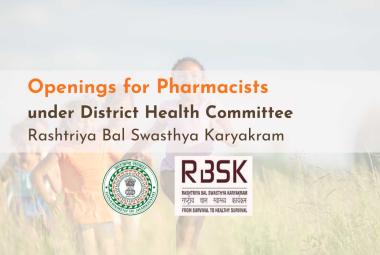About Authors:
*Jayalakshmi Ramanna, Dr. Ravishankar Gunturu
M.Sc., CCRP,
BDS, M.sc., CCRP
jaya14lak@yahoo.com
To find the maternal and foetal outcomes in Pregnancy induced hypertension (PIH).
Primary objective: To study the maternal and foetal outcomes in PIH.
Secondary objective:
* To compare these outcomes in primiparous and multiparous PIH women.
* To find prevalence of different types of PIH and to study their outcomes
Medical records of one year were reviewed. A total of 791 cases were present as per the medical records. Out of these, 245 cases had PIH.
Statistical methods: Chi square test was used to compare variables. Descriptive analyses were used to study maternal foetal outcomes.
Result: The commonly seen maternal outcomes were higher rates of caesarian section, maternal deaths and post partum hemorrhage in PIH women. The foetal outcomes were live births, still births, deaths, low birth weight and low APGAR scores. There was a strong association between maternal outcomes and parity. The rate of caesarian was higher in primiparous women. The association between foetal outcomes and parity was not statistically significant. Preeclampsia was the most common type of PIH and these women were more prone to hypertensive complications.
Reference ID: PHARMATUTOR-ART-1961
Conclusion: In the present study most commonly seen outcomes in PIH women were in agreement with data obtained from previous studies. Majority of PIH cases went for caesarean delivery in present study .Many studies conducted previously also showed similar outcome with increased rate of caesarian section. The incidence of PIH is higher in developing countries due to poor socio-economic condition.The common maternal complications were deaths, higher caesarian rates and foetal complications were still birth, deaths and low birth weights. Primiparous women were more prone to adverse outcomes. Preeclampsia was the most common type of PIH seen in present study.
Introduction
Hypertension is disorder of Blood Pressure. A person is said to be hypertensive if the systolic BP is greater than 140 mm of Hg and diastolic BP is greater than 90mm of Hg. The exact etiology of hypertension is not known. A number of factors like Obesity, aging, stress, sedentary life style are said to play role in its etiology. Hypertension is seen even during pregnancy. This hypertension is said to be pregnancy induced. This is due to the stress during pregnancy. Pregnancy induced hypertension is one of the most common and dangerous disorder in mothers during pregnancy (1). Low serum calcium levels are found to play a vital role in etiology of PIH. Many opine that insulin resistance is involved in pathogenesis of PIH. Pregnancy induced hypertension is known to affect 5% of the pregnancies (2) . There are 3 clinical types of PIH. They are Preeclampsia, Eclampsia and Gestational hypertension (1).
[adsense:468x15:2204050025]
Preeclampsia: It occurs in about 10% of primiparous women and in 5% of multiparous women. There is raise in BP at least twice with a time gap of 6 hours. (3)
Eclampsia: This is a condition where preeclampsia is accompanied by coma or convulsions. The incidence if eclampsia varies in different countries. The cause of convulsion is not known. (3).
Gestational hypertension (BP >140/90): This is a condition in which hypertension is seen only during pregnancy and blood pressure comes back to normal after delivery.(3)
Complications of PIH: Maternal complications (outcomes):
- Higher rates of caesarian section
- Maternal deaths
- Post partum hemorrhage (3)
Fetal complications (outcomes):(1)
- Intrauterine death
- Asphyxia
- Prematurity
- low birth weight
Diagnosis: PIH can be diagnosed by any of the following examinations:
- Urine test
- Measuring blood pressure
- Weight checks
There are many risk factors for PIH. It is very commonly seen in:
- Primigravidae (4)
- Women aged above 40
- Women with high BP just before pregnancy
- Genetic factors (2)
Treatment: The treatment of PIH depends on severity of disease, patient’s opinion, due date and also tolerance to antihypertensive drugs (6). Different treatment strategies followed are bed rest either at home or hospital and antihypertensive medications (5). Health care provider decides upon the treatment based on due date. There is a need for continuous maternal and foetal monitoring in PIH.
Prevention is always better than to cure. PIH can be prevented by exercising, proper Rest, proper diet, avoiding oily food, reducing intake of caffeine
The aim of this study was to find the maternal and foetal outcomes in PIH. The secondary aims were to compare these outcomes in primiparous and multiparous women. The prevalence and outcomes of different types of PIH was also studied.
Materials and methods
One year medical records of Obstetrics and Gynecology department were reviewed from May 2005 to April 2006 to find the PIH cases (1). The medical records reviewed had details of patients, their demographic data, age, gestational age, parity, obstetric history, diagnosis and outcome. It also had details of foetal sex, birth weight, APGAR scores at 1st and 5th minute, foetal outcomes. APGAR scores indicates activeness of newborns in terms of its respiratory rate, muscle tone etc. Primigravidae (primiparity) was defined as the first pregnancy. The subsequent pregnancies were called as multigravidae (multiparity). Gestational age was determined based on last menstrual cycle. Here new borns were classified as low birth weight cases based on definition of World Health Organization. As per World Health Organization’s definition new borns with low birth weight are those born with a weight less than 2500g(1). The outcomes in mother and foetus were studied. The complications were studied in both primiparous and multiparous women. All singleton pregnancies with mild or severe eclampsia, preeclampsia and gestational hypertension were included in study. All twin pregnancies were excluded. Prevalence of different types of PIH and their outcomes was studied separately. The age of the women in this study was ranging between 18 to 35 years in both the groups as per medical record. There was no variation in demographic and obstetric characteristics of women in both the parity group. The cases marked as hypertensive on record were included in the study.
Table: Population studied and control
| Attributes | Total pregnant cases studied | PIH cases | Non PIH cases |
| Number | 791 | 245 | 546 |
There were 794 pregnant cases present in the year 2005- 06 as per medical record. Out of these, 3 twin pregnancies were excluded. In remaining 791 cases, 245 cases had PIH as shown in table 1. The outcomes studied were type of delivery, death and post partum hemorrhage in mothers. The main outcomes studied in newborns were low birth weight, low APGAR scores, still birth and death. The complications were compared in primiparous and multiparous women. PIH was classified as Preeclampsia, Eclampsia and Gestational hypertension.
Parity and age distribution of women in both groups are represented in table and respectively
Parity distribution cases
Age distribution in PIH and non PIH
Statistical methods:
The data was stored in excel sheet. Statistician was approached for analysis of the data. Descriptive analysis was performed. Comparative analyses were performed using Chi square test to see the homogeneity of the quantitative variables. The student’s t test was used to compare the means of the quantitative variables. SPSS software 11.0 version was used for statistical analyses. The output generated was decoded and results were interpreted in the form of table or graphs.
Results
The most common maternal outcomes were aesarian, induced and normal deliveries. The majority of the PIH cases went for caesarian deliveries (46.1%), followed by normal (25.3%) deliveries and induced deliveries (15.9). Two maternal deaths were reported (0.816%).Two cases with post partum hemorrhage were reported (0.816%). The most commonly seen foetal outcomes were live births, stillbirths and deaths. The rate of stillbirths and death were 18% and 4.1% respectively. 78% 0f the live births were seen in PIH cases. Other complications like Asphyxia, IUGR, foetal distress was seen .Asphyxia was seen in 1 case which died after some time. FD was seen in 7 births (2.9%), 2 of which died. IUGR was seen in 20 cases (8.2%).
The association between the parity and maternal outcomes are found to be statistically significant (P<0.05). The results of this study show that the rate of caesarian deliveries is 36.2% and 27.2% in primiparous than multiparous cases respectively. The rate of caesarian deliveries is comparatively higher in primiparous than multiparous cases. The rate of induced delivery was 20 and 22.7% in primiparous than multiparous cases. The rate of normal delivery was 43.8% and 50% respectively in primiparous than multiparous cases. Hence majority of the primiparous cases went for caesarian section. There were 2 maternal deaths (1.48%) and two cases of PPH (1.48%) reported in primiparous women.
There is no association between foetal outcomes and parity. (P>0.05) .The rate of still births in primiparous and multiparous cases was 9.6% and 11.8% respectively. The death rates were 5.3% and 5.5% in primiparous and multiparous cases respectively. Here there is no much difference in rates of foetal complications in primiparous and multiparous cases. The live birth rates were 85.1% and 82.7% respectively in primiparous and multiparous cases. The other complications like asphyxia and fetal distress were seen in primiparous cases. IUGR were reported in 12 primiparous cases, rest 8 cases were seen in multiparous women.
Table
Mean, SD of APGAR score at 1st minute of new born, t-value, d.f and significance level between primiparous and multiparous women in PIH group
Student’s t test is used to test the difference between the two means i.e. between primiparous and multiparous women. The mean APGAR score at 1st minute is 4.0 and 3.8 in primiparous and multiparous women respectively as show in table. This difference is not statistically significant.
Table
Mean, SD of APGAR score at 5th minute of new born, t-value, d.f and significance level between primiparous and multiparous women in PIH group
Student’s t test is used to test the difference between the two means i.e. between primiparous and multiparous . The mean APGAR score at 5th minute is 7.02 and 6.96 in primiparous and multiparous respectively as show in table. This difference is also not statistically significant. Here there is no difference between mean APGAR score of primiparous and multiparous .
Table
Mean, SD of birth weight, t-value, d.f and significance level between primiparous and multiparous women
Student’s t test is used to test the difference between the two means i.e. between primiparous and multiparous. There is no significant difference between the two means as show in table. The mean birth weight in primiparous and multiparous is 2.2 Kgs and 2.1 Kgs respectively.
Table: Type of PIH and its prevalence
Preeclampsia, eclampsia and gestational hypertension were seen in 21.3%, 8.7%and 0.88% of the PIH cases respectively as shown in table. Preeclampsia was found to be more prevalent when compared to other types of PIH.
Discussion
It was seen that the majority of the PIH cases went for caesarian delivery. The rate of caesarian delivery was (46.1%) followed by normal (38.1%) and induced (15.9%) deliveries. The results obtained in this study are in consistency with the data generated from other studies. A study was conducted at teaching hospital and also at few medical colleges in India to find out the major indications of caesarian deliveries. It was seen that PIH was one of the major indications of caesarian deliveries. Caesarian is the most common type of deliveries recommended in PIH. (7) . Here the rate of maternal deaths reported was higher compared to previous studies (0.816%).There was one (0.08%) maternal death in previous study (8) . As to the rate of caesarian deliveries in PIH cases, its frequency was slightly lower in present study than earlier study conducted (9). The rate of caesarian was 59.9% in this study done to see the case profiles of maternal mortality in Saul Paulo.The fetal outcomes seen in the study were live births (78%), still birth (18%), death (4%) in this study. The outcomes studied were low birth weight, pre maturity, still birth, low APGAR scores, deaths. The mean birth weight of neonates born to PIH cases was 2.1 Kgs. These results are in agreement with foetal outcomes seen in other studies. In a study conducted earlier to see foetal outcomes in PIH, it was seen that 19% of the cases had low birth weight (1). PIH is said to increase the rate of foetal deaths. (10) A study conducted to find the levels of serum lipids on PIH cases revealed that neonates born to PIH cases had lower birth weights than those born to normal ones. (6).The mean APGAR value was 4 and 6.41 at 1st and 5th minute respectively in present study. In a previous study conducted to assess the foetal outcomes in PIH, APGAR score was found to be greater than or equal to 7 at 1st minute in 84.1% of the cases and it was less than 7 in 15.9% of the cases .It was greater or equal to 7 and less than 7 at 5th minute in 99.2 and 0.8% of the cases respectively (1). The rate of cesarean section was higher in primiparous women. It is said that primiparous women were more prone to PIH (11). They had higher frequency of preeclampsia, eclampsia and gestational hypertension (95%, 98% and 98%). There are no many studies done to see the severity or effect of parity in PIH. . A study conducted to see the maternal and perinatal outcomes in eclampsia said that primiparous women were more prone to eclampsia than multiparous women. (12).There are many studies which say that primiparous women are more pone to PIH or any hypertensive complication than multiparous women.(12) (13).
In a study carried out to see the effect of smoking on PIH, it was seen that there was no variation in complications in both primiparous and multiparous women (14). Here there was no association between foetal outcomes and parity. Hence null hypothesis was accepted at P<0.05. But there was a strong association between maternal complications and parity. Hence null hypothesis was rejected at P<0.05. The rate of caesarian deliveries was higher in primiparous women. Two maternal deaths were seen in primiparous women. The other complications like asphyxia, IUGR and foetal distress were more prevalent in primiparous cases in present study.A study conducted to see the outcomes of PIH showed that there was no difference in caesarian rates in primiparous and multiparous women. (15) But perinatal death, foetal death on admission was seen mostly in multiparous and two foetal deaths were seen in primiparous cases during hospital stay. There was no difference in the means of APGAR scores of new born at 1st and 5th minute between primiparous and multiparous cases in the present study .The difference in mean weights of the neonates between primiparous and multiparous cases were also not very significant.Hence null hypothesis was accepted at P>0.05.Here preeclampsia was the most common type of PIH in the present study. Caesarian rate was higher in eclampsia. There was no much difference in foetal outcomes in different types of PIH. Caesarian is said to be the most common type of delivery in preeclampsia. Incidence of eclampsia was found to be 1.66% in a study conducted at Lagos State University Teaching Hospital (16). In the present study it was 5 times more than this. The rate of caesarian was 53.7% in women with eclampsia in previous study. In the present study it was found to be 52.2%. Maternal complications were more common in preeclampsic cases. Hence this data obtained is in agreement with previous study.
It was seen that the infant complications were more prevalent in preeclampsia than other types of PIH. The still birth of foetus was more common in gestational hypertension and preeclamsia. The death rate of new born was also higher in preeclamsia. Many complications and fatal outcomes were reported in preeclampsic women in earlier studies also. The low birth weights and preterm births were higher in preclampsia in earlier studies (11) . In the present study preeclampsic women were more prone to various complications as in previous studies (17). PIH may head to severe complications in later life. It is found to be associated with coronary heart disease in later stages of life in women with PIH. Hence necessary steps have to be taken to ensure proper diagnosis, care and treatment. This will ensure decrease in occurrence of PIH. The incidence of preeclampsia was 15% in previous studies (18). This is slightly lower when compared to incidence rate in present study. The rate of maternal mortality is high in developing countries due to poor socio economic condition. Improving standard of living might help to prevent these complications. PIH is the third most common cause of maternal death in developing countries. 68% of the total deaths due to hypertensive complications occur in South Asia. The prevalence of hypertension is 31.8% and 42.2% among males and females respectively (19). The maternal and foetal complications due to PIH, mortality and morbidity rates are lesser in developed countries due to appropriate care (1) .The proper identification and management of PIH, regular maternal and foetal monitoring will help in reducing the maternal and foetal mortality and morbidity. (12)
PIH is one of the leading causes of maternal, foetal mortality and morbidity. Hence there is a need for more researches and studies in this area. This study indicates that the prevalence of PIH is high in India. It has major effect on both mothers and new born. This study also recommends for a better maternal and foetal monitoring along with standard therapy as the lack of these have been reported to be the main cause of high prevalence. Hence this a study in this area would surely help in understanding the present situation of PIH in India. The higher rates of prevalence indicate the absence of standard antenatal and perinatal monitoring. Many government hospitals are providing treatment and medications free of cost. The prevalence of poor economic condition is higher in India. Hence cost constraints will not allow them to afford private hospitals. Hence they are devoid of a standard care and treatment. This case control comparative study gave an insight upon of maternal and foetal outcomes in PIH. The data generated in this study is in agreement with other studies. There are many studies conducted and being conducted in this area. This is one of the leading causes of maternal and foetal deaths in majority of the developing countries. The rate of PIH has reduced in developed countries due to proper precautionary measures taken during pregnancy. This study would help in understanding of loopholes in treatment, management strategy of PIH. This might also encourage others to conduct further studies in this aspect. This might provoke hospital administration and other authorities to take up necessary actions to prevent this raise in the incidence of PIH. Retrospective study was carried out due to time constraints. Non availability of adequate time is the limitation of this study. Other details of the patients like previous medical history and other complications present in women during pregnancy along with hypertension were not recorded in medical record for all cases.
Conclusion and future work
The present study shows that PIH is on of the major indication of caesarian section. It is one of the major causes of maternal mortality and morbidity. PIH was found to be associated with the larger number of maternal and foetal complications.This study talks about the most common maternal and foetal outcomes in PIH. However retrospective study was carried out mainly because of time constraints. The most common maternal outcome in the present study was higher rates of caesarian section in PIH cases. This is in agreement with data generated from previous studies. In addition to this there were maternal deaths and complications like PPH. The most common foetal complications were still births, deaths and low birth in the present study.There was a significant association between maternal outcomes and parity in PIH. But the association between foetal outcomes and parity was not significant. Preeclampsia was the most common type of PIH seen in present study followed by eclampsia and gestational hypertension. Caesarian was common outcome in all types of PIH. The rate of still birth was higher in preeclampsia even though it was common in all types of PIH.This study would help in understanding most frequently occurring maternal and foetal complications. PIH is said to be the one of the four main causes of maternal death in Brazil. (1). Hence conducting study in this area will contribute the better understanding of this aspect. These complications are fatal if not treated. Hence appropriate care must be taken to diagnose and identify PIH at initial stage and provide appropriate treatment. This would ensure the reduction in incidence of PIH. This would in turn reduce the rate of maternal and foetal mortality and morbidity. The rate of maternal mortality and morbidity due to PIH has reduced in recent years with increased care towards mothers and newborns and by providing appropriate treatment in US. The prevalence of PIH is found to be higher in developing country like India. This is due to the poor socioeconomic strata. This prevents patients with PIH from obtaining a proper perinatal and antenatal care. Proper maternal and foetal monitoring and a good management of hypertension with antihypertensive medication are recommended. This would bring down the rate of PIH in India.
Future work
There is a need for more work in this area as PIH is one of the most common disorders during pregnancy. If there was no restriction on time the present study could have focused on after effects of PIH by following up these women. There are many studies which say that these women are more prone to various diseases in later stages of their life. Hence this could have been possible if these subjects were contacted and followed up. Other areas like treatment or most common medications used in PIH and pharmacoeconomic study would have been conducted. Low socioeconomic condition is highly prevalent in India. Hence conducting pharmacoeconomic study will enlighten upon amount spent on medication and other economic aspects related to their treatment. PIH is highly prevalent in India. This can be attributed mainly to poor socio economic condition, lack of standard treatment strategy, lack of awareness of PIH among women. Hence a good standard treatment strategy and educating programmes for women regarding various aspects of PIH like diagnosis, treatment and prevention is needed.
References
1. Regina, S. Chaim P, Maria S ,Vasconcellos J,Oliveira D, Kimura A F .Pregnancy-induced hypertension and the neonatal outcome.Acta Paul Enferm.2008; vol 21, no 1, pp: 53-58.
2. Irgens H U, ReisÊter L, Irgens L M , Lie RT, Long term mortality of mothers and fathers after preeclampsia: population based cohort study, November 2001 ,BMJ ,Vol 323 , pp:1213 ,www.bmj.com
3. Book: Dutta; Hypertensive disorders in pregnancy. Text book of obstetrics in pregnancy; pp: 235-255
4. Rasmussen S, Irgens L M , Predicting Preeclampsia in the Second Pregnancy from Low Birth Weight in the First Pregnancy ,Obstetrics & Gynecology,pp: 696-700
5. Shen J. J., Tymkow C, MacMullen N, Disparities in maternal outcomes among four ethnic populatios. Ethnicity & Disease. 2005 vol 15,: pp:492-497
6. Mohanty,S., Nayak N, Nanda NN, Rao P.Serun lipids and malondialdehyde levels in primiparous patients with pregnancy induced hypertension. Indian Journal of Clinical Biochemistry, 2006, vol 21, no 1,pp: 189-192
7. Kambo I, X Bedi N, Dhillon B S, Saxena N C.A critical appraisal of cesarean section rates at teaching hospitals in India. International Journal of Gynecology & Obstetrics. 2002, Vol 79, Issue 2, November, pp:151-158
8. Lydakis, C., Obstetric and neonatal outcomes following chronic hypertension in pregnancy among different ethnic groups, 1998,Q J Med,vol 91,pp: 837-844
9. Leung, KY, Sum TK, Tse CY, Law KM, Chan MYM. Is in-patient management of diastolic blood pressure between 90 and 100 mm Hg during pregnancy necessary? June 1998 , HKMJ ,Vol 4 ,No 2 ,pp:211-217
10. KnightK B , Keith R E., Calcium supplementation on normotensive and hypertensive pregnant women, Am J C/in Nuir, 1992, vol 55, pp: 89l-895
11. Baulon.E, Fraser W D , Piedboeuf B, Buekens P, Xiong X. Pregnancy-induced hypertension and infant growth at 28 and 42 days postpartum. BMC Pregnancy and Childbirth. 2005:vol 5:no 10
12. Naib, J M., Siddiqui M L , Ajmal W. Maternal and perinatal outcome in eclampsia,a one year study. J pakmed ,2004, Vol 18 No 3 :: Page 470 – 476,
13. Badria, L. F, Amarin Z. O. Pre-eclampsia: is it a different disease in primiparous and multiparous women?. Archives of Gynecology & Obstetrics :2005: 273(1): 26-31.
14. Yang Q, Wen S W , Smith G N, Chen Y, Krewski D,Chen1 X K, et al. Maternal cigarette smoking and the risk of pregnancy-induced hypertension and eclampsia, International Journal of Epidemiology, 2006, vol 35,pp:288–293
15. Hussein, M., Mooij J M V, Roujouleh H. Hypertension in Pregnancy: Presentation, Management and Outcome - A Retrospective Analysis of 135 Cases. Saudi journal of kidney diseases and transplantation, 1998, vol 9, Issue 4, pp: 416-424
16. Akinola O, Fabamwo A, Gbadegesin A ,Ottun A, Kusemiju O. Improving The Clinical Outcome In Cases Of Eclampsia: The Experience At Lagos State University Teaching Hospital, Ikeja, The Internet Journal of Third World Medicine , 2008: Vol 6:no 2.
17. Rasmussen S, Irgens L M. Fetal Growth and Body Proportion in Preeclampsia, Obstetric & Gynecology : Vol. 101, No. 3, March 2003,pp:575-583
18. Brown M. A, Buddle M L. Hypertension in pregnancy: maternal and fetal outcomes according to laboratory and clinical features.MJA:1996;vol:165,pp: 360-365
19. Mohapatra,S., Bulliyya G, Babu B, Mohapatra S, Nayak R.Health status of the elderly population among four primitive tribes of Orissa, India: A clinico-epidemiological study, Z Gerontol Geriatr. 2008 Apr 10
NOW YOU CAN ALSO PUBLISH YOUR ARTICLE ONLINE.
SUBMIT YOUR ARTICLE/PROJECT AT articles@pharmatutor.org
Subscribe to Pharmatutor Alerts by Email
FIND OUT MORE ARTICLES AT OUR DATABASE









